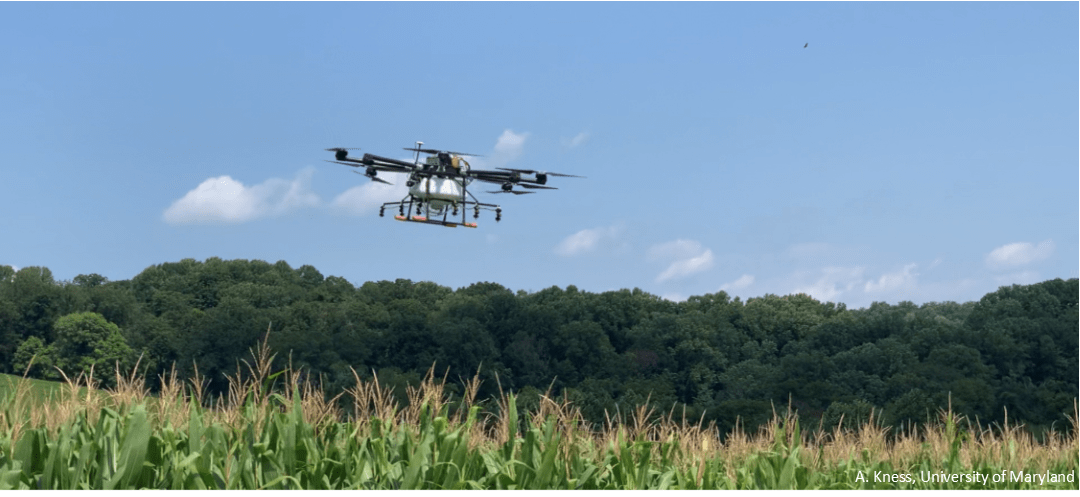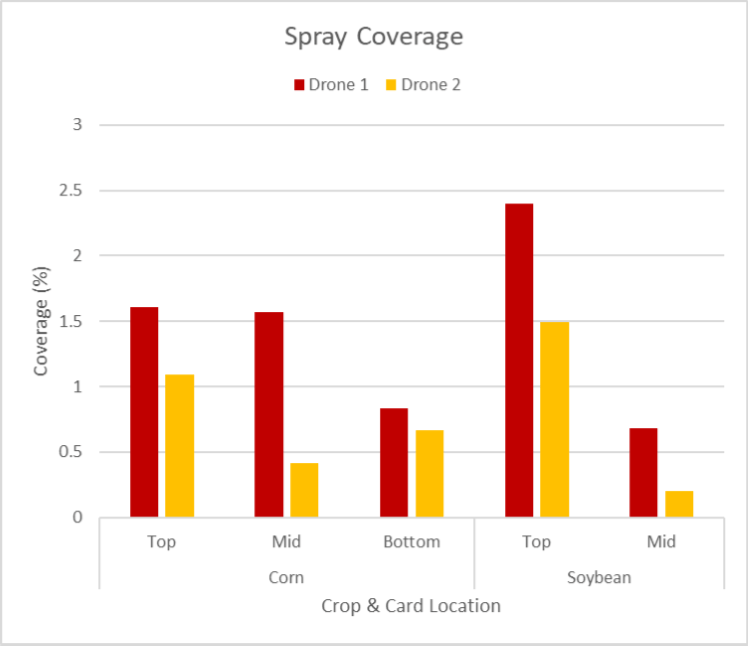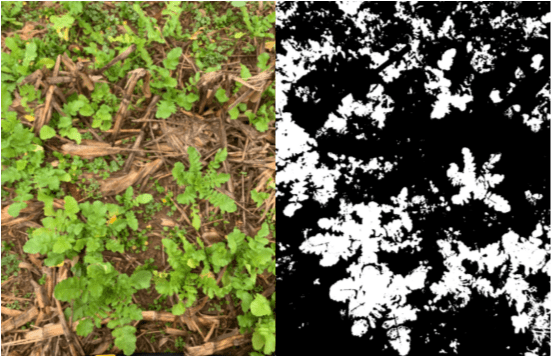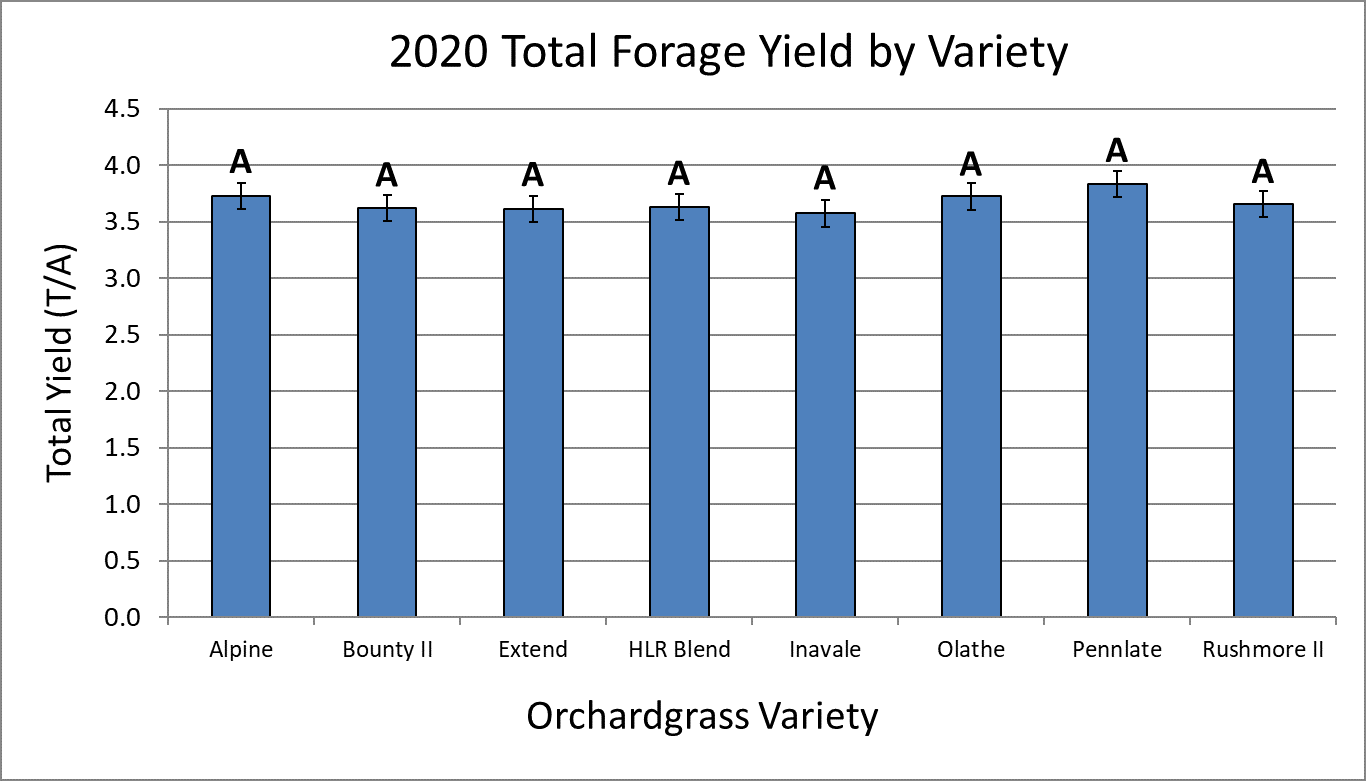Ramesh Pokharel1, Alyssa Koehler2, Sarah Hirsh3, Jim Lewis3, & Nidhi Rawat4
1USDA APHIS, Riverdale, MD
2Department of Plant and Soil Sciences, University of Delaware
3University of Maryland Extension
4Department of Plant Science and Landscape Architecture, University of Maryland, College Park
Small-scale soil surveys were conducted in the major soybean growing counties of Maryland and Delaware in summer 2019 with funding support from Maryland Soybean Board. The following eight genera of parasitic nematodes were observed in varying densities: root-knot (Meloidogyne), Cysts (Heterodera), root lesion (Pratylenchus), dagger (Xiphinema), stunt (Tylenchorhynchus), stubby root (Trichodorus), spiral (Helicotylenchus), lance (Hoplolaimus), and needle nematode (Longidorus). Out of these eight, soybean cyst, root-knot, and root lesion nematodes are the most economically significant to soybean production. It is important to note that nematode management in fields requires long-term application of management tactics, and should be adopted is the densities of problematic nematodes exceeds their Economic threshold levels. Economic Threshold Level (ETL) is defined as the density of nematodes at which the damage caused by a particular nematode exceeds the cost of managing it. Biology of major parasitic nematodes of soybean found in the mini-survey, as well as the management approaches recommended for them are described in this article.
Soybean Cyst Nematode (SCN)
Soybean cyst nematode (SCN) was first detected in Worcester County in Maryland in 1980 (Sardanelli et al., 1982) and subsequently spread to most eastern shore counties of MD and to DE. In the present survey 41 and 57, samples from Maryland and Delaware, respectively were found positive for SCN, where 50 and 41 % of fields had SNC densities higher than ETL (60 individuals per 500 cc soil). This survey indicated that SCN remains an important problem in the eastern shore counties of MD and in DE.
Biology: Juvenile larvae (J2), the most infective stage, emerge from eggs and enter plant roots establishing feeding sites. Males become vermiform (worm-shaped) and exit the roots, whereas lemon-shaped young females slightly less than 1 mm in diameter, whitish-yellow in color appear on the roots. The adult females break through the root surface but remain attached to the root. Mating takes place on the root surface and females lay 50-100 eggs in an egg mass on the back of their body. The female then fills will more than 200 eggs and dies. The body walls harden to form a tough cyst around the eggs, which can remain viable in the soil for long periods, even in adverse conditions. The vermiform (worm-shaped) juvenile and adult males as well as the brown cysts (dead female body containing eggs), and freed eggs can be extracted from the soil. Often, cysts may get confused with nitrogen fixing bacteria Bradyrhizobium root nodules, which are pinkish in color and smaller than cysts and can easily be squeezed in between fingers producing pinkish fluid. Under favorable environmental conditions, SCN can complete a life cycle in four weeks, making it possible to have multiple life cycles over the course of a season.
Symptoms: SCN infected fields often lack obvious above ground symptoms, making SCN infestation difficult to predict unless soil samples are taken for nematode assessment. If symptoms are present, they may be confused with other diseases or abiotic stress. High SCN populations may cause yellowing or stunting of above ground plant parts and/or root distortion, dwarfing, stunting, reduction in nitrogen-fixing nodules, and increased susceptibility to other soil-borne plant pathogens.
Management strategies: SCN is often called the silent yield robber because it can be difficult to know that populations are building. Since SCN can survive in the soil for many years even in adverse conditions, it will take consistent long-term efforts to reduce SCN problem in a field. Currently, ‘PI 88788’, ‘Peking’, and ‘PI 437654’ ‘Hartwig’ are the available sources of resistance. ‘PI 88788’ has been the primary source of resistance for decades and is found in over 95% of soybeans currently available. Long-term exposure to this resistance gene has selected for SCN populations that are able to reproduce at higher rates and overcome the ‘PI 88788’ source of resistance. Rotating resistance from ‘PI88788’ to ‘Peking’ has been reported to minimize losses, while plots with the continuous use of ‘PI 88788’ or ‘Peking’ had 5% and 8% lower yields, respectively. Race determination is important to decide the efficacy of resistant sources or cultivars. Soybean maturity group also affects SCN reproduction.
Late maturing groups remain in the field until late October or November, allowing an extra generation of SCN to develop. Selecting soybeans with an earlier maturity group can help reduce SCN population numbers the following year. Soybeans rotated with non-host crops such as corn, small grains, and alfalfa help to reduce the nematode build up in a field. All types of beans, lespedeza and hairy vetch, some ornamental plants and weeds such as henbit, purple deadnettle and common mullein can help maintain SCN populations and should be avoided. One year in a weed-free non-host crop can reduce SCN population up to 55%.
Since some of the eggs may remain unhatched in the cyst for years, it is impossible to completely destroy SCN populations by starvation. Seed treatments generally help to protect young roots from nematode infection, thereby reducing crop yield losses, but this will not reduce the SCN population in a field. Aveo and ILEVO are some of the products that are known to reduce nematode damage to the crop.
Root-knot nematode (RKN)
Root-knot nematode (RKN) may cause significant (more than 70%) yield loss, when a susceptible variety is planted in field with a high population density of root-knot nematodes. In less fertile soil, soybean and corn can be severely damaged, especially when they are mono-cultured for several years. Damage to these crops is more serious and wide-spread in years when soils where temperatures are unusually warm during the early part of the growing season. Several species of Meloidogyne are reported to infect soybean; M. incognita (southern root knot), M. enterlobii (guava root knot), M. javanica (Javanese root knot), M. hapla (northern root knot), and M. arenaria (peanut root knot). Of which, Meloidogyne incognita, is the most common root-knot nematode species found in Maryland and Delaware (Everts et al., 2006). In the present mini-survey of Maryland and Delaware, 58% and 17% of samples, respectively had RKN. Three percent of the fields tested in Maryland had RKN densities higher than ETL of 170 nematodes per 500 cc soil.
Biology: The life cycle of root knot nematodes (eggs, larvae and adults) is completed within 14-25 days depending upon several factors, especially soil temperature. Under favorable conditions, juveniles hatch immediately from eggs, otherwise eggs remain dormant and can survive in soil for several years until favorable conditions for hatching are available.
Symptoms: Plants infected with RKN exhibit symptoms varying from asymptomatic to non-uniform stunting, wilting, and chlorotic patches, mostly caused by high populations in the soil. When dug up, plants infected by RKN will exhibit root galling symptoms. Root galls caused by RKN may get confused with root nodules produced by nitrogen fixing bacteria, Bradyrhizobium. Root nodules are generally round and can easily be squeezed producing pink to reddish milky substances whereas nematode induced root galls vary in shape and size,are hard to squeeze, and do not produce milky substance when crushing.
Management strategies: Knowing where RKN is distributed in a field is an important first step to management. Nematodes can easily be carried field to field by equipment and vehicles, so sanitizing equipment between affected fields can minimize the change of moving RKN to new fields. Like many nematode genera, RKN is often worse in sandy-to-sandy loam soils. Due to a wide host range, crop rotation is not always an effective management strategy for root-knot nematode. Rotation with poor host crops can help to decrease populations. Broccoli, cauliflower, grain sorghum or millet (for bird feed) can lower root-knot numbers, particularly if they are grown for two consecutive years. Rye, grown as a winter cover crop, may also help lower nematode populations. Delaying soybean planting until mid-June, as done in double-crop wheat/soybean systems will reduce the number of nematode reproductive generations.
With the phase out of many chemical nematicides, chemical control is not cost-effective for RKN currently. The most cost-effective management strategy is to select a RKN resistant variety.
Root Lesion Nematode (RLN)
Root-lesion nematode (RLN) is one of the most common nematodes in Maryland and Delaware in soybean crops. Jenkins et al. (1956) reported higher numbers of this genus in soybean samples than other crops. Later, Pratylenchus spp. were found in 78% of 362 samples in eight counties across MD and DE with P. penetrans being the most common species (Sindermann et al., 1993). In the present mini-survey, genus Pratylenchus was observed in 58% and 60% of the field samples in MD and DE, respectively. Densities higher than the ETL (>500 nematodes per 500 cc) soil were found in 5% of the fields.
Biology: Sexual reproduction is common in P. penetrans, but not in all species. Males are rare or absent in many species such as P. hexincisus, P. neglectus, and P. scribneri. The females lay eggs (after/ without mating) singly or in small groups in the host root or in the soil near the root surface. The first larval stage and molt occur within the egg. The second-stage larva emerges from the egg and undergoes three more molts before becoming an adult. The egg hatches within 1 to 3 weeks, depending on the soil temperature.
Symptoms: RLN produces characteristic necrotic lesions (darkened areas of dead tissue) on infected roots, which turn reddish-brown to black later. Nematode migration and feeding within the roots cause coalescence of several small spots into large necrotic areas that may eventually girdle the root. High nematode populations can cause stunting and necrosis of the root system. The extent of lesion formation can be accelerated by root infection by other soilborne plant pathogens, which may produce synergistic disease complexes.
Management strategies: Due to the wide host range, crop rotation is generally not effective for the management of RLN especially in high density populations. RLN can cause extensive yield loss in more than 160 host plants that includes both grasses and broadleaf plants including crops and weeds. Grain crops such as corn, wheat, and alfalfa are favorite hosts. If the nematode population is low, cover crops such as ryegrass or canola used as green manures may be useful to decrease population build up if successively incorporated into rotational cropping sequences (Everts et al., 2006). Limited information is available on soybean cultivars with RLN resistance.
Dagger nematode (Xiphinema)
Dagger nematode is not an important problem in soybean in Maryland and Delaware at present because of lower densities and incidence as compared to other nematodes. The damage due to dagger The ETL of dagger nematode is population densities above 250 per 100 cc soil. Dagger nematode has a very wide host range and many grass species appear to be good hosts of dagger nematode. Species of Xiphinema are sensitive to changes in soil temperature and moisture and will migrate away from desiccating conditions in topsoil; most dagger nematodes can live and survive deep in the soil. Dagger nematodes feed on the outside of roots and root cells eventually collapse due to feeding. These nematodes are important in crop production because they vector some important plant viruses. Soybean severe stunt virus (SSSV) transmitted by this nematode has been reported in some fields in MD and DE.
Lance nematodes (Hoplolaimus spp.)
Lance nematodes feed on plant roots as ectoparasites (body remaining outside) or semi-endoparasites (body within roots). Previously this genus was observed in 23% of samples in 1956, and 38% in 1978 (Golden and Rebois,1978). Additionally, lance nematode were found in 43% of 199 soybean fields in eight counties of Maryland in 1993 (Sindermann et al., 1993). In the present mini-survey, Lance nematodes were found in 8% samples with only 2% fields having levels higher than ETL. Higher percentages of tested fields (about 25%) were positive for lance nematodes in Delaware, but only 2% of fields were above ETL. Lance nematodes have been associated with alfalfa, barley, carnation, clover, corn, grass, lespedeza, oat, pea, pepper, rye, soybean, sweet potato, timothy, tobacco, tomato, and wheat. No difference in the preference of soil type of this nematode was found and Hoplolaimus spp. were considered less common than other plant parasitic nematodes of the region.
Stubby root nematodes (Trichodorus and Paratrichodorus spp.)
Stubby root nematodes are difficult to manage in corn/soybean rotations, as both crops are susceptible. Optimal growing condition, especially moisture and fertilizer, will help to support plant growth. Nematicide seed treatments are not effective if high populations of the nematodes are present. Stubby root nematodes may live below the depth that fumigants would be placed, so fumigant treatments are not recommended.
Concluding remarks: Mini-surveys of soybean fields conducted in summer 2019 in Maryland and Delaware soybean growing counties identified Soybean Cyst, Root knot, and Root lesion nematodes as predominant parasitic nematodes in the two states. Dagger and lance nematodes were found to be other potentially damaging nematode genera in variable densities, but not in all samples. Other minor nematode genera observed included Stunt nematode, Needle nematode, and Spiral nematode, with low densities and incidences. By the time aerial symptoms become apparent, high densities of nematodes have already developed in the field. It is advisable to keep an annual track of problematic nematodes by soil sampling and scouting for root symptoms. Consistent long-term management strategies need to be applied to keep the nematode problem successfully and sustainably in control. Table 1 below summarizes the economic threshold levels and management strategies recommended for managing major problematic soybean nematode genera found in the 2019 mini-survey. It is important to note that the need to consider application of major management strategies should be based on population densities of the parasitic nematodes in your field. If the nematode population density in a field exceeds the ETL, suggested management strategies should be used. For making this decision, it is important to measure the density of particular nematodes in your fields. The following article, “Sampling for plant parasitic nematodes” provides details about how to correctly collect representative soil samples for nematode determination in crop fields.
Table 1. Economic Thresholds and Management Strategies for Parasitic nematodes found in soybean fields in Maryland and Delaware during a mini-survey conducted in summer 2019.
| Nematode |
ETL* per 500 cc soil |
Available management strategies |
| Soybean Cyst Nematode |
60 |
1. Rotate soybeans with non-host crops like corn, small grains, and alfalfa.
2. Avoid lespedeza, hairy vetch, and beans which maintain SCN population.
3. Avoid weeds such as henbit, purple deadnettle, and common mullein.
4. Grow early maturing cultivars if your field has high population level of SCN.
5. Manage and rotate resistant cultivars as majority of ‘PI 88788’ resistant cultivars are becoming susceptible to SCN.
6. If severe nematode populations persist, apply seed treatments such as Aveo and ILEVO. |
| Root Lesion Nematode |
>500 |
1. Grow non-host crop such as ryegrass or canola.
2. Grow relatively tolerant soybean cultivar such as ‘Essex’ and avoid sensitive cultivars such as ‘Forrest’.
3. Delay soybean planting until mid-June, as done with double-crop wheat/soybean systems.
4. Avoid planting other suitable host crops such as tobacco and peanuts. |
| Root Knot Nematode |
170 |
1. Plant resistant soybean cultivars.
2. Use cover crops ryegrass or canola and incorporate as green manures.
3. Rotate soybean with non-host crops such as Broccoli, cauliflower, grain sorghum or millet (for bird feed) and winter crops such as Rye.
4. If severe RKN persist, apply seed treatment. |
| Lance Nematode |
250 |
1. Grow moderately tolerant cultivars such as ‘Northrup King’, ‘S83-30’, ‘Coker 368, ‘Centennial, ‘Hagood’ and ‘Maxcy’.
2. Grow small grains if nematode numbers are moderate-to-high.
3. Grow castor bean, rape seeds and sorghum sundangrass as green manure crops and incorporate after three months.
4. If high nematode population exists for several years apply chemical seed treatment. |
| Dagger Nematode |
250 |
1. Practice crop rotation with corn or grain sorghum, wheat followed by ‘HT-5203’ soybean, or 2-year fallow |
| Stubby root Nematode |
>100 |
1. Grow moderately tolerant cultivars.
2. Avoid host crops such as corn, cotton, and soybean. |
References:
Everts, K. L., Sardanelli, S., Kratochvil, R. J., Armentrout, D. K., & Gallagher, L. E. (2006). Root knot and root lesion nematode suppression by cover crops, poultry litter, and poultry litter compost. Plant Disease, 90, 487–492.
Golden, A. M., & Rebois, R. V. (1978). Nematodes on soybean in Maryland. Plant Disease Report, 62, 430–432.
Jenkins, W. R., Taylor, D. P., & Rohde, R. A. (1956). A preliminary report of nematodes found on corn, tobacco, and soybean in Maryland. Plant Disease Report, 40, 37–38.
Sardanelli, S. L., Krusberg, L. R., Kantzes, J. G., & Hutzell, P. A. (1982). Soybean cyst nematode, fact sheet 340. College Park: Maryland Cooperative Extension Service.
Sindermann, A., Williams, G., Sardanelli, S., & Krusberg, L. R. (1993). Survey for Heterodera glycines in Maryland. Journal of Nematology, 25, 887–889.









